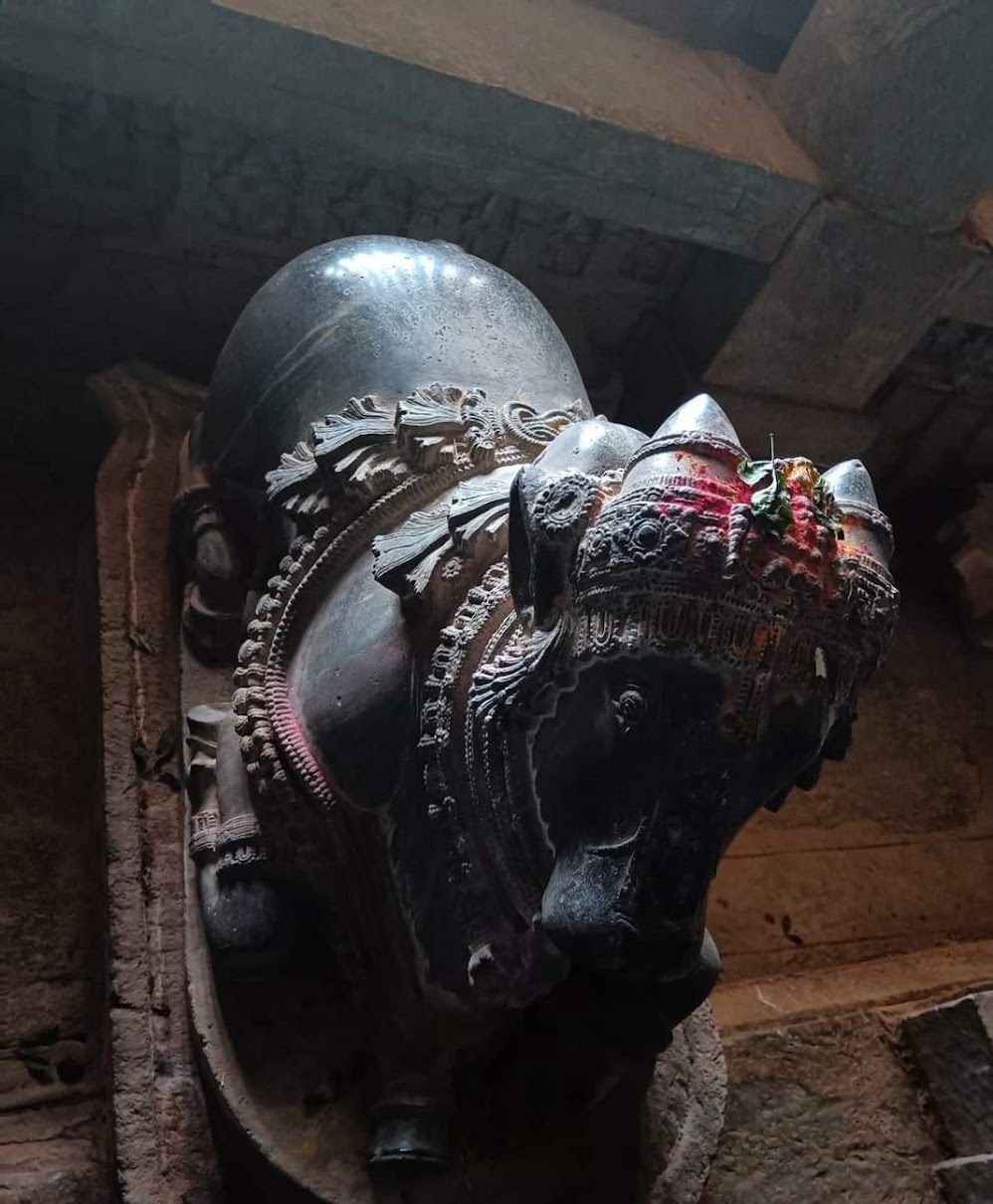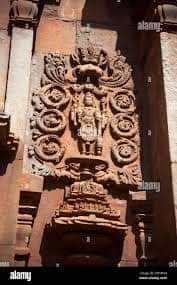PANCHALINGESHWARA TEMPLE - Govindanahalli - Mandya - Karnataka.
The term Kuta or shrine could be derived from the
Sanskrit term Kuti, which means house.
This Hoysala temple started as a Chaturkuta (4) got extended as a Pancha (five) kuta (shrines) temple for lord Shiva showing the five aspects related to Sadashiva, namely Tatpurusha, Vamadeva, Aghora, Satjyotha & Ishana.
The Kutas or Shrines are lined up from north to south, with all the Garbhahriha's facing east having a Shiva Lingam each, with a beautifully decorated Nandi facing the lingam from the Navaranga(3 nandis) or outside (2 nandis).
Each Garbhahriha has a small Antarala or Ardhamandapa, which leads to a common Mukhamandapa or Navaranga.
The Navaranga seems to be like an elongated hall with four pillars in between for each shrine. Each Garbhahriha again has two small sub-shrines on both sides housing various gods like Vinayaka, Mahishasuramardini, Bhairava, Sukhasanamurthy, Kartikeya, etc.
This rectangular Navaranga can be entered by two north
facing entrances, which houses 4 lathed
pillared Mandapam with a decorated Nandi each and two magnificent Dwarapalaka's
guarding the entrances before the second and third shrines.
Unlike other Hoysala temples, this temple is devoid of a pedestal (generally star shaped) maybe because of its rectangular nature, however it has all three tiered Vimana's with exquisite carvings & lotus shaped Kumbhams made in stone.
The outer wall of the Garbhahriha's (Devakoshtha) from the lower edge of the vimana to the adhishthana seems like the canvas of the Hoysala sculptors, filled with pillasters holding photo frames like shrines depicting gods and goddesses and frames from Hindu epics.
Inspite of this being a Shiva temple, these frames
contain Mahavishnu from the Chaturvimsati murtayaha. It also contains idols and
icons of Devakanya's, Vinayaka, Indra on Airavata, Parvati, Narasimha, Garuda,
Brahma, Karthikeya, Nataraja, Ravaanugraha, Dancing Vaani,Parameshwari, Shiva
and Parvati with mongoose,Varaha, Krishna.
Though inaugurated during the reign of the Hoysala King Veera Someshwara (1234-63) in 1238 CE, the temple seems to have been constructed over a period of time during the 13th century CE. The Sthapathya of the temple is also associated with one of the prominent Sthapathees Ruvari Mallithamma.










.jpeg)
.jpeg)
.jpeg)
.jpeg)
.jpeg)
.jpeg)

.jpeg)

.jpeg)

